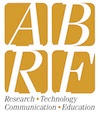July 2021 News
Did you know, as of July 13, 2020 there are 17 facilities cited in PubMed Central publications by their RRID?
RRIDs contribute to accurate citation in research publications. RRIDs link back to your CoreMarketplace facility listing both directly via URLs and indirectly via Google and other search engines. Also, the CoreMarketplace finds any publication using your facility RRID on PubMed Central and makes it available to you to list.
What is an RRID?
It's short for Research Resource Identifier. It's a unique code that represents all of the information in your facility listing. (Learn more here.) RRIDs are used to link resources together. It can link your facility to publications. It can link your listing to other websites. It can link your facility to other research IDs such as the ORCID.
You can learn more about integrating your RRID with your ORCID at this page here.
If you have an RRID, you can append it to the CoreMarketplace URL and make a direct link to your listing.
(example) https://coremarketplace.org/RRID:SCR_018676
Or maybe you want to link the information in your listing to your university web page? If you type in the direct link to your listing and append .json or .xml (both are structured formats for dealing with information), your web developer can easily grab whatever information you have posted and re-post it on another site.
(example) https://coremarketplace.org/RRID:SCR_018676.json
This is exactly how your core information gets shared around the web. But without an RRID, your core information doesn't get shared and doesn't get seen.
How do you get an RRID?
Edit your facility listing. Make sure all the contact information is correct, especially the name, institution, and website. All newly edited listings become candidates for RRIDs and if the above three pieces of information are accurate, you will have one assigned to you.
One great RRID success story comes from the Human Islet Research Network (HIRN). About two years ago they adopted RRIDs and pushed to have them included in publications citing their organization. Today, there are over 80 publications listed in Google Scholar citing their RRID. You can see for yourself with the following Google Scholar link.
How do you promote the use of your RRID?
In a nutshell, tell your researchers about it. Simple ways of doing this can be putting your RRID on your websites, adding it to your email signatures, and put it on signage within your facility.
As RRIDs become a standard for research publications, investigators will need to know what your RRID is. Best thing is to make it easy for them.


